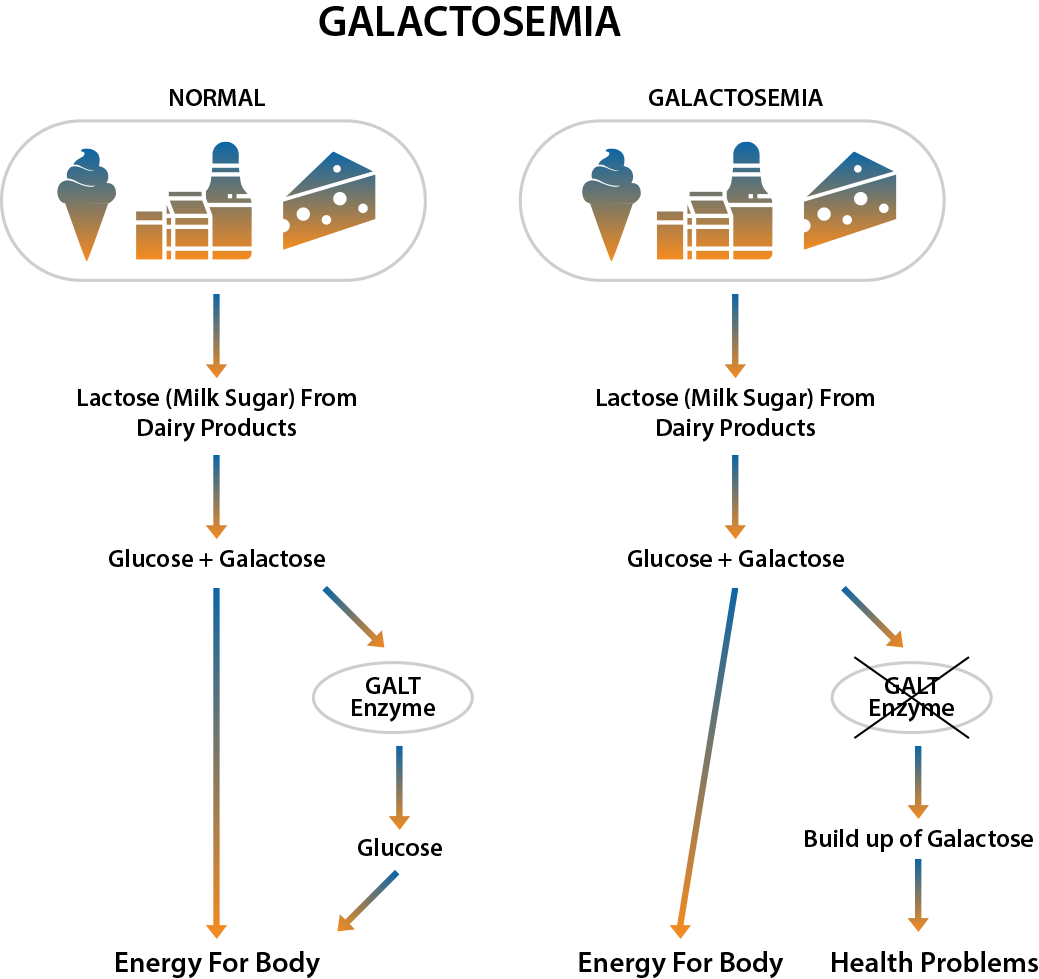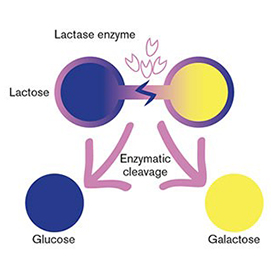SYMPTOMS OF GALACTOSEMIA
If infants with classic galactosemia are not treated promptly with a low-galactose diet, life-threatening complications appear within a few days after birth. Affected infants typically develop feeding difficulties, a lack of energy, failure to grow and gain weight as expected (failure to thrive), yellowing of the skin and whites of the eyes (jaundice), liver damage, and abnormal bleeding. Other serious complications can include overwhelming bacterial infections (sepsis) and shock. Affected children are also at increased risk of developmental delay, clouding of the lens of the eye (cataract), speech difficulties, and intellectual disability. Females with classic galactosemia may experience reproductive problems caused by premature ovarian failure.


